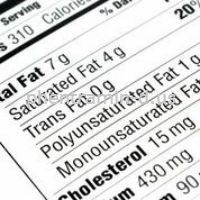Nowadays there seems to be a lot of reform happening with regard to the foods we eat. What used to be considered an all-inclusive label is now being challenged at a federal level. Recently, there have been at least three monumental proposals to change food labels for the national public. Unfortunately, for one reason or another, there is still a lot of disagreement about what should stay on the label, what should go, and what should be added. For now, here is where we stand:
· New Disclosure of Any Added Sugars
There are many ways in which the public has sought to change food labels. For one, food manufacturers have to let us know if they have added any extra sugars to the ingredients before offering a food item on the market. This allows consumers to make more conscientious decisions regarding their diet. However, certain manufacturers (especially those who use lots of sugar to make their products more appealing) do not want this information available to the public, believing that it will harm their business. It will be interesting to see what outcome this vital data has on some businesses’ bottom line.
· What Is Considered “Natural” Has Changed
It used to be that “natural” could be slapped on the side of nearly any box or package. Now, though, things have changed, and there is a lot of debate about it. Foods that contain ingredients that have been through some sort of chemical process can no longer use the “natural” label. Therefore, those food manufacturers who use lots of high fructose corn syrup, maltodextrin, or alkali will have to rethink their labeling process—not good news for a lot of businesses that have been unjustly skating on the “health food” wave.
· Caffeine Is in Almost Everything
Thanks to the public’s willingness to change food labels, consumers can now see that there is caffeine in a lot more foods and drinks than they might have originally thought. Especially common in some of our favorite beverages, this energy-inducing chemical can wreak havoc on our health, which makes its inclusion on food labels essential. Anything that has more than 10 milligrams of caffeine must now be labeled to that effect; this is turning some popular items into forgotten relics of a not-so-healthy past.
Unfortunately, the recent efforts to change food labels have not been able to conquer the realm of genetically modified items. As time goes on, though, it is a safe bet to say that this aspect, too, will see reform. In the meantime, there is still a lot of debate around what should happen next with food labels.



Recent Comments